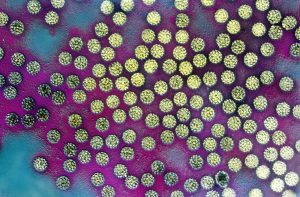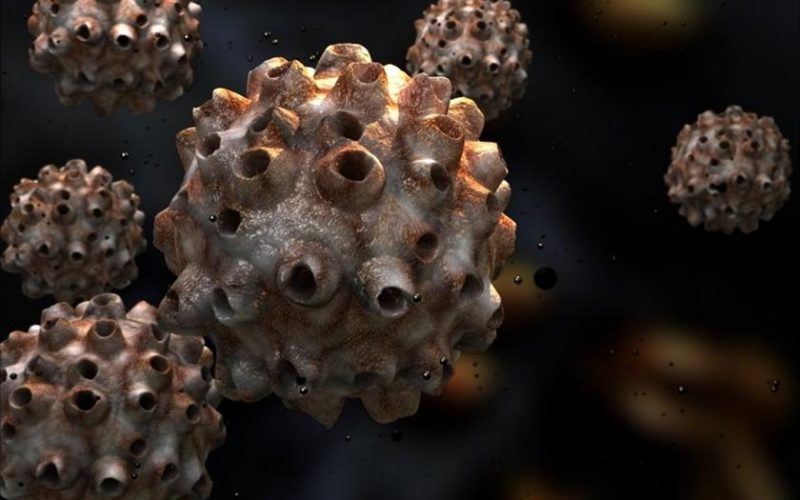Should I take any medication if I have papilloma virus in my body? Is it true that this virus only occurs in casual sex? And is it necessary to remove warts? Let’s take a look at the truth and myths about the human papillomavirus.
Today, the human papilloma virus (HPV or Human papilloma virus – HPV) is one of the most common viruses that more and more people become infected with every year. According to the World Health Organization, HPV is found in every sixth inhabitant of the Earth. This means that the inhabitants of our planet need to know as much as possible about this virus in order to prevent infection, and if it has already occurred, then in order to correctly select antiviral and immunomodulatory therapy.

What is HPV?
Human papillomavirus is a group of viruses that includes more than 170 strains. When HPV is infected, it sinks into the cells of the skin or mucous membranes, causes a violation of their division and can provoke the development of various diseases. This virus is quite tenacious and is able to exist for some time in the external environment.
Types of human papillomavirus
Some types of HPV are relatively harmless to humans. Other harmful species can exist for years in the body, at first not manifesting in any way and “waiting” for the weakening of the immune system, when it is possible to activate and begin its destructive activity. The most dangerous are the so-called oncogenic human papillomaviruses, which can lead to the development of cancer. Such types are designated by the numbers 16, 18, 31, 33, 35, 39, 45, 51, 52, 56, 58, 59 and 68.
If you have been tested and you have found one of the oncogenic types of HPV, then you need to be very careful about your health, be sure to visit your doctor regularly and follow all his recommendations to prevent the development of cancer.
How does HPV get infected?
Most often, human papillomavirus is transmitted sexually, including anal intercourse and oral sex. Also, infection can occur during childbirth, from mother to child. The household route of transmission of the virus is also possible – for example, in a swimming pool, where HPV can penetrate the skin through microdamages.
Self-infection is also quite common – the transfer of a virus from one part of the body to another during shaving or epilation.
How does HPV manifest?
The first signs of HPV penetration into the body appear on average two to three months after infection. The human papillomavirus enters cells and can cause the appearance of papillomas and warts – flesh-colored or brown formations that occupy the neck, eye area, axillary region, arms and feet. Genital warts appear in the genital area and can cover the skin of the foreskin and the glans penis in men, the labia majora and minora, the cervix in women, the urethra, the bladder, and the anus. Multiple growths of genital warts resemble cauliflower.
Oncogenic human papillomaviruses can lead to cancer of the cervix in women and cancer of the skin of the penis in men. However, even in the presence of HPV in the body of a high oncogenic risk, oncological diseases do not always develop. Timely referral to experienced doctors, correctly selected therapy and careful attention to your health will help you never face the dangerous manifestations of human papillomavirus infection.
Diagnosis and treatment of HPV
Comprehensive HPV diagnostics includes a specialist examination, colposcopy, PCR analysis, cytological examination of the cervix, cervical biopsy and a number of other modern studies that allow you to accurately establish the type of papilloma virus if it is present in the body. You can get diagnosed as a couple – at the gynecologist and urologist.
Treatment is based on eliminating the manifestations of human papillomavirus infection, taking into account the virus strain and the stage of development of the detected disease. Today, there are no drugs and medical procedures that would permanently remove the virus from the body, but with the help of competent HPV therapy, you can make you “sleep” and not harm your health. The more closely you follow your doctor’s recommendations, the more likely it is that the human papillomavirus will not make itself felt.
The main method of treatment for genital warts is their removal, after which the patient is recommended to take antiviral drugs and immunomodulators, which will help to strengthen the body’s natural defenses.
All drugs for the treatment of HPV should be selected only by a doctor, self-medication is unacceptable! After all, what has helped one person can harm another. If you have papillomas, genital warts or suspected HPV infection, seek help immediately.
Prevention of human papillomavirus infection
In addition to the obvious recommendations for avoiding promiscuous sex life, vaccinations are recommended for the prevention of HPV. It is most rational to vaccinate before the conditions of infection arise, that is, before the onset of sexual activity. Recommended age for vaccination: for girls and boys – 9-17 years, for girls – 18-26 years. Currently, scientists are working to study the positive effect of vaccination of people over 30 years old.
The most common myths about HPV
Myth number 1: if there are no papillomas and condylomas on the skin and mucous membranes, then there is no HPV virus in the body.
The virus can live in the body for years, not showing itself in any way and “waiting” for the weakening of the immune system in order to declare itself an oncological disease. HPV can be detected only when you see a doctor.
Myth # 2: Removing papillomas and genital warts means that a person is no longer contagious.
According to experts, the removal of skin growths that appear with the human papillomavirus reduces the risk of transmission of the virus to sexual partners, but does not reduce it to zero. This means that you can get infected from a person whose skin and mucous membranes do not have papillomas and condylomas.
Myth # 3: In a monogamous relationship, a HPV diagnosis means that the couple has cheated.
The human papillomavirus can be dormant for a long period of time. This means that you can become infected with it in childhood, from the mother, and it will manifest itself at the age of 30 or later. Also, the household method of transmission of the virus is not excluded.
Myth # 4: HPV always leads to cancer.
This is not true. Even in the presence of oncogenic types of the virus in the body, cancer develops only with a significant weakening of the immune system. Timely medical assistance will help prevent cancer.
Myth # 5: A condom protects against HPV.
A condom will certainly reduce the chances of contracting HPV https://en.wikipedia.org/wiki/Human_papillomavirus_infection and sexually transmitted diseases. But still, protected sex is not an absolute guarantee, since HPV is transmitted through any contacts of the mucous membranes. The only way to keep yourself from complications from HPV infection is to visit your doctor regularly.
